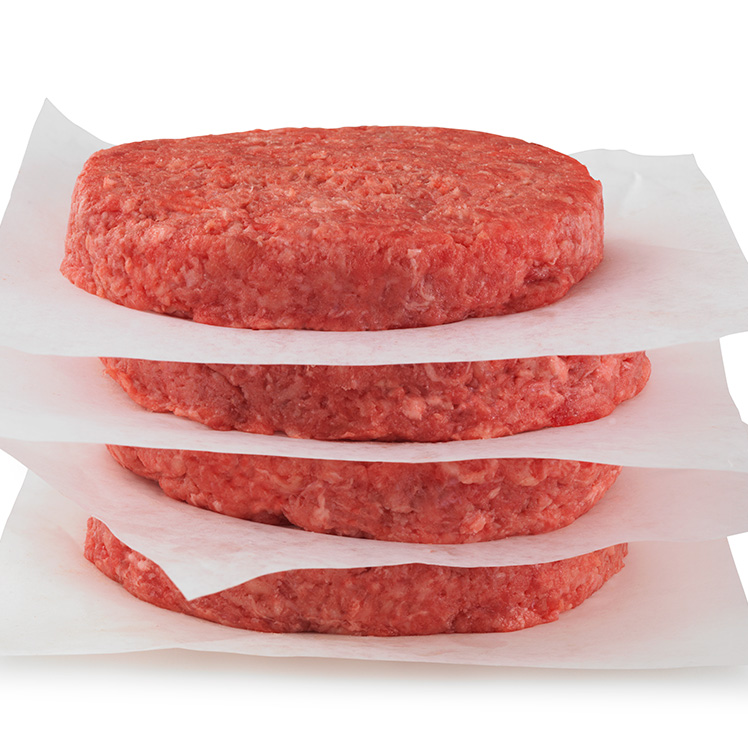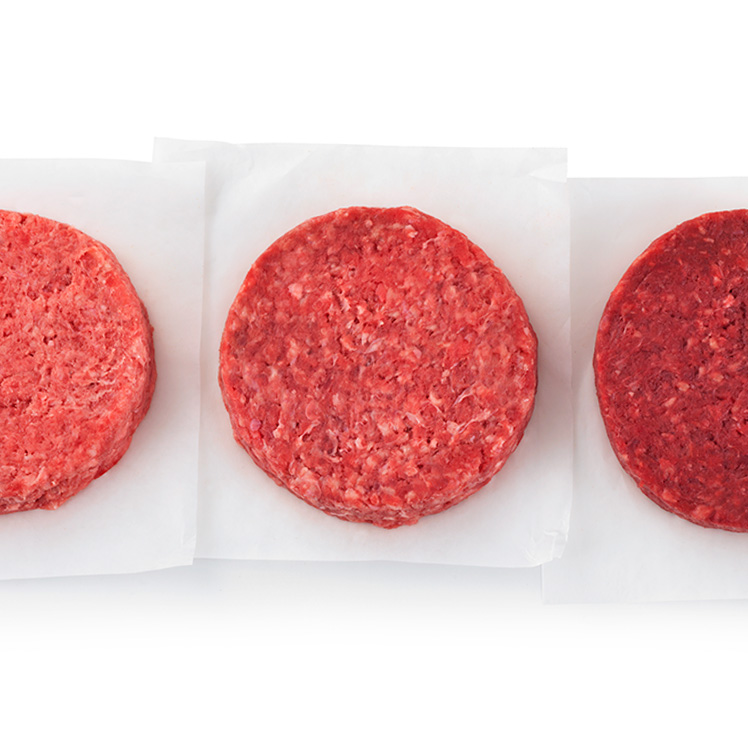Ground Beef Patties
Nearly three in five operators agree that burgers are profit centers.* To make the most of that profit opportunity, finding the right burger patty is critical.
Learn more about ground beef patty variations such as patty source blends, patty shapes and sizes, storage, handling and more to make the right choice for your needs and operation.
*Datassential, 2023
Page contents:
Expert Tips | Patty Source Blends | Patty Shape | Patty Sizes | Storage and Handling
Expert TipS
Count on our experts for great tips on how to cook or grill the perfect burger! Follow the tips below for flavorful, juicy burgers every time. Here are just a few quick tips to follow for flavorful, juicy burgers every time.
- Keep the shape, size and thickness of burger patties and help reduce shrinkage by cooking at lower temperatures
- The best way to know a burger patty is safely cooked is to ensure internal the temperature reaches at least 160°F
- For a juicy, tender burger, allow the patty to plump naturally and try not to press while cooking
- To keep burger patties from plumping too much, gently press a ‘dimple’ in the middle of each burger before cooking
- Interested in more expert tips? Schedule a free one-on-one consultation with a Food Fanatics® Chef or COP Specialist here >>
Patty Source Blends
Lean-to-fat ratios and source grinds are important factors to consider when choosing the right ground beef patties for your operation. The quantity of lean versus fat present in each blend is known as the “lean-to-fat ratio”, with the first number representing the lean. The source grind typically indicates a specific subprimal (or muscle) as the raw material, such as chuck, round or sirloin.
Depending on your budget and menu needs, consider the following common lean-to-fat ratios and popular grinds from different primals, subprimals and cuts, each with unique flavor and textural attributes, which can be highlighted through different applications and dishes.
Standard Ground Beef Patties
- Lean-to-fat ratio: 73/27 to 80/20
- High levels of juiciness, bind and flavor
- Best cooked on a flat top for faster cooking

Ground Chuck Patties
- Lean-to-fat ratio: 80/20 to 85/15
- Often labeled as “lean”
- Ideal levels of juiciness, bind and flavor
- Most popular blend for burger patties
- Ideally cooked on a broiler to avoid burning or charring

Ground Round Patties
- Lean-to-fat ratio: 85/15 to 90/10
- Often labeled as “extra-lean”
- Lower fat content and less beefy flavor
- Can be seasoned to enhance flavor

Ground Sirloin Patties
- Lean-to-fat ratio: 90/10
- Hearty flavor and chewier texture
- Best in dishes cooked quickly over high heat

SPECIALTY PATTY BLENDS
Gaining popularity in recent years and highlighted in trendy menu items such as the pub and craft burger, specialty patty blends feature the use of non-traditional cuts, such as brisket and short ribs. Delivering distinct flavor profiles, these blends include:
- Angus Chuck: a steak burger made from the finest premium Black Angus cattle. Premium cuts of whole boneless chucks deliver consistent quality and flavor
- Prime Chuck: a steak burger made from whole premium cuts of boneless chuck, with abundant marbling for a flavorful and beefy tasting burger
- Chuck Sirloin and Round: an excellent flavor profile combining the richness of the chuck and the tenderness of the sirloin and round, resulting in a mouthwatering bite
- Ground Chuck, Brisket and Short Rib: a superb blend of buttery, robust beef flavor and soft airy texture
Patty SHAPES/Textures

- Typically the most common option for burgers
- Traditional look for all applications

- Ideal for Salisbury steak and similar sauce or gravy dishes

- Square cut is usually used for burgers and other hot sandwiches

- Irregular shape
- Provides a “premium” and “freshly made” homestyle look

- Dimples allow heat to penetrate the patty faster, which typically results in a decreased cook time
- This is a feature that may boost appearance and offer a unique texture
Patty Sizes
Ideally, the size of the patty should conform to the shape of the bun for an appetizing-looking burger. Burger sizes typically vary from appetizer-size 2 oz. sliders to 8 oz., 10 oz., 12 oz. and up to 1 lb. burgers – all with distinct cooking times. Patty thickness also matters in cooking times and presentations/applications.

The number of burgers per pound is another way to measure burger sizes and choose the best ones for your operation needs.
- 2:1 = 8 oz. burgers, or 2 patties per 1 pound
- 3:1 = 5.33 oz. burgers, or 3 patties per 1 pound
- 4:1 = 4 oz. burger, or 4 patties per 1 pound
STORAGE AND HANDLING
Storage
- All ground meats should be stored on the coldest side of the cooler
- Avoid locations near the door to prevent spikes in temperature from the outside air
- Temperature spikes make the product vulnerable to microbial spoilage at a more rapid rate – and depending on the temperature of the air outside of the cooler, and how long the ground beef is exposed, can raise the temperature into the Danger Zone where pathogens survive and grow between 40°F and 140°F. See the COP Cooler Map for more information.
- Operators should store items immediately upon delivery and inspection, in cold storage – or it may have an impact on the shelf-life and quality of the product
Handling
- Operators should use a first-in, first-out rotation, so products dated with the earliest “Use By” date are in front, and the farthest dates are in the back
- Space allowing, operators should keep food in original boxes/containers to maintain lot code and “best/use by date” information

